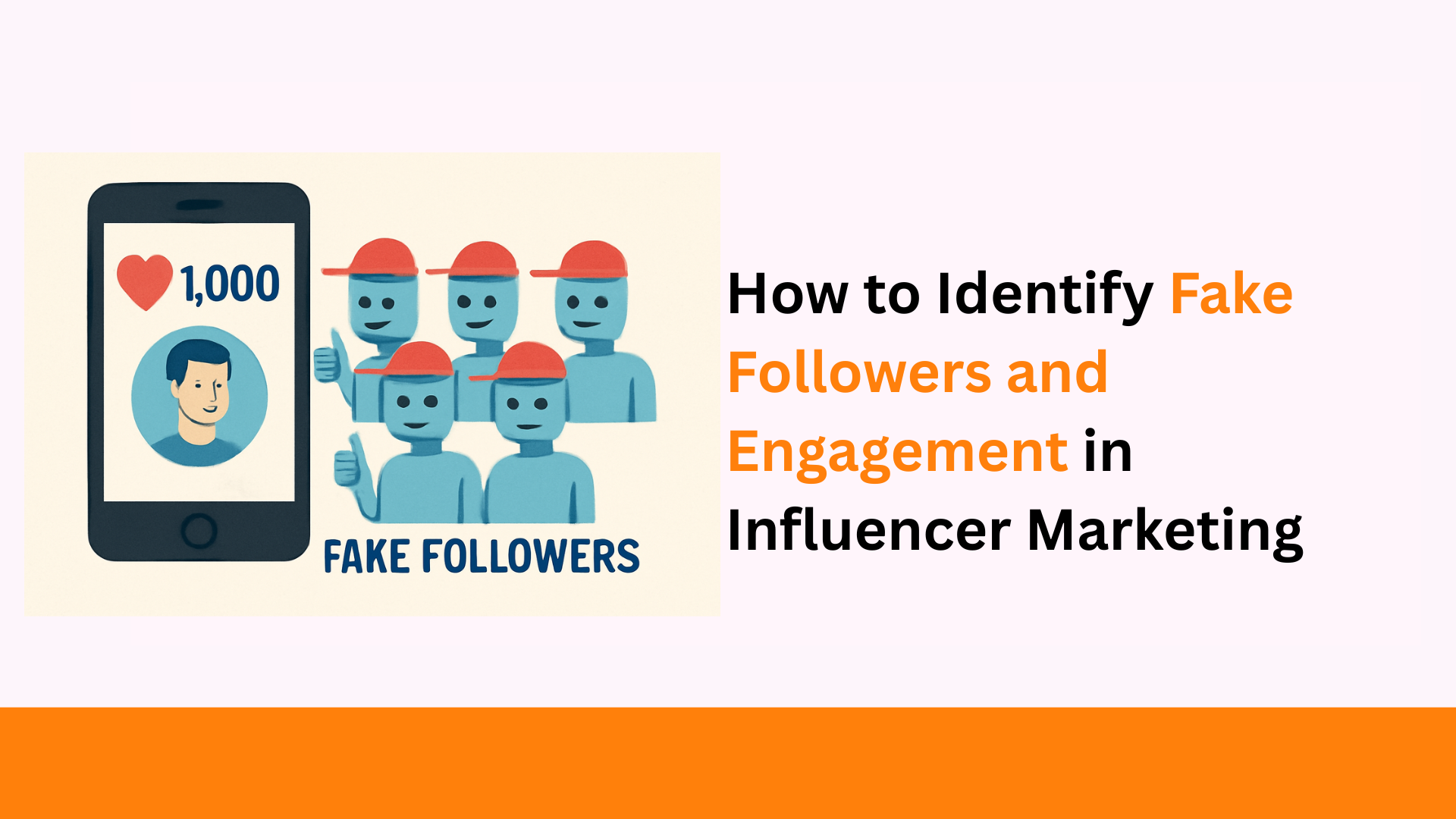TLDR
- Reach measures the total number of unique people who see content, making it ideal for awareness campaigns and product launches
- Engagement tracks active audience interactions (likes, comments, shares), indicating content resonance and community-building potential
- Neither metric is inherently superior, your campaign goals should determine which to prioritize
- Top-of-funnel brand awareness initiatives benefit from reach, while conversion-focused campaigns thrive on engagement
- The most successful influencer campaigns strategically balance both metrics based on specific marketing objectives
The Great Influencer Marketing Debate: Reach vs Engagement
India’s influencer marketing industry reached ₹1,275 crore in 2022 and is projected to grow at a CAGR of 25% through 2025, according to the INCA-e4m Influencer Marketing Report. With such explosive growth, marketers face a critical question: should they prioritize influencers with massive follower counts or those with highly engaged communities?
The answer isn’t as straightforward as many “experts” claim. While some marketers religiously follow the “reach is vanity, engagement is sanity” mantra, the reality demands more nuance. Let’s explore how these metrics function in India’s unique influencer landscape and when each deserves your attention.
What Is Reach in Influencer Marketing?
Reach represents the total number of unique users who view your influencer’s content. It’s essentially the size of the audience, how many eyeballs potentially see your message. In India’s diverse digital ecosystem, reach takes on particular importance given the country’s 749 million internet users as of 2023 (IAMAI-Kantar ICUBE report).
Reach metrics typically include:
- Total follower count
- Impressions
- Potential audience size
- Content distribution scope
When Bollywood stars like Alia Bhatt or cricketers like Virat Kohli post branded content, they deliver exceptional reach due to their massive follower bases. A single Instagram post from Kohli can potentially reach over 271 million users, that’s more than the population of most countries.
For brands launching new products in the Indian market or building initial awareness, reach becomes a powerful tool to maximize visibility quickly. This approach aligns perfectly with influencer marketing strategy goals focused on brand recognition and market penetration.
What Is Engagement and Why Does It Matter?
Engagement measures how actively an audience interacts with content through actions like likes, comments, shares, and saves. While reach tells you how many people saw content, engagement reveals how many actually cared enough to respond.
According to Qoruz, micro-influencers in India average 3.86% engagement rates, significantly outperforming celebrities whose engagement often falls below 1.5%. This reflects a global pattern where smaller, more authentic voices generate stronger audience connections.
Engagement metrics typically include:
- Likes and reactions
- Comments and conversation
- Shares and reposts
- Saves for future reference
- Click-through rates
- Time spent with content
When Delhi-based food blogger Shivesh Bhatia shares a recipe with his modest (compared to celebrities) yet dedicated following, his posts often generate hundreds of comments and thousands of saves, showing an audience that’s genuinely invested in his content.
For brands seeking to build communities, generate word-of-mouth, or drive conversions, engagement offers a window into audience sentiment and purchase intent. This approach works particularly well with an influencer marketing platform that can help track these complex interactions.
Reach vs Engagement: What Do They Tell You?
Understanding what each metric reveals about your campaigns helps make more informed marketing decisions:
| Metric | What It Measures | When to Prioritize | Ideal For |
| Reach | Content visibility and audience size | When building initial awareness | Product launches, mainstream brand campaigns, mass-market penetration |
| Engagement | Audience interaction and content resonance | When seeking deeper connections | Niche products, community building, and driving consideration |
The distinction becomes particularly important in India’s diverse market, where regional and linguistic differences create unique engagement patterns. For example, Hindi-speaking influencers might have greater reach, but Tamil or Bengali creators often generate higher engagement rates within their specific language communities.
When evaluating influencer performance, an influencer marketing software solution can help track both metrics simultaneously, providing comprehensive campaign insights.
Campaign Goal Determines the Right Metric
Your specific marketing objectives should always drive which metric takes precedence:
When to Prioritize Reach
- New product launches seeking maximum visibility
- Building initial market awareness
- Brand repositioning campaigns
- Mass-market consumer goods promotions
Consider smartphone brand RealMe’s strategy when it entered India’s competitive market. They initially partnered with high-reach tech influencers to ensure widespread awareness, focusing first on visibility before drilling down to engagement.
When to Prioritize Engagement
- Conversion-focused campaigns
- Building brand loyalty and advocacy
- Niche or premium product marketing
- Educational content that requires audience attention
Beauty brand Sugar Cosmetics’ approach exemplifies this strategy. They frequently collaborate with micro-influencers who generate extensive tutorial comments, product questions, and testimonials, indicating genuine purchase consideration despite smaller reach.
When Reach Can Be Misleading
While impressive follower counts catch attention, they can sometimes lead marketers astray:
- Inflated Followers: India’s influencer market has seen its share of fake follower scandals. A 2022 Cheq study estimated that approximately 15% of followers across Indian influencer accounts are potentially fraudulent.
- Irrelevant Audiences: A fashion influencer with 1 million followers might seem appealing, but if half their audience comes from unrelated interests, your message misses its target.
- Algorithm Limitations: Not every follower sees every post. Instagram and YouTube algorithms typically show content to just 5-10% of an influencer’s total audience.
- Passive Viewing: High reach doesn’t guarantee attention. Users might scroll past content without meaningful engagement.
Rather than getting seduced by big numbers, focus on audience quality and alignment using reliable brand mentions tracking to gauge actual impact.
When Engagement Isn’t Enough
Conversely, high engagement percentages can sometimes create a false sense of success:
- Limited Scale: A micro-influencer with 20% engagement on 5,000 followers still reaches fewer people than a macro-influencer with 2% engagement on 500,000 followers.
- Echo Chambers: Some niche communities generate high engagement but lack diversity, limiting campaign impact.
- Comment Quality: Not all engagement is positive. Analyzing sentiments reveals whether high comment counts reflect enthusiasm or criticism.
- Engagement Baiting: Tactics like “Tag three friends to win” artificially inflate metrics without genuine interest.
The most effective influencer content strategy balances reach and engagement metrics based on specific campaign objectives rather than blindly prioritizing either.
Real-World Case Study: Beauty Brand Campaign
Consider this example from India’s beauty market:
Influencer A:
- Followers: 2.5 million
- Average engagement rate: 0.8%
- Reach per post: ~250,000
- Engaged users: ~2,000
Influencer B:
- Followers: 95,000
- Average engagement rate: 5.5%
- Reach per post: ~35,000
- Engaged users: ~5,250
For a nationwide product launch by Nykaa, Influencer A provided greater visibility. However, when MyGlamm sought detailed product feedback and conversion, Influencer B delivered superior results despite lower reach.
Finding Your Perfect Balance
The most successful Indian brands develop hybrid approaches:
- Tiered Strategy: Use high-reach influencers for initial awareness, then transition to high-engagement creators for conversion.
- Regional Optimization: Balance national reach with localized engagement by working with both Hindi-speaking mega influencers and regional language micro-influencers.
- Content-Driven Selection: Match metrics to content types; awareness videos benefit from reach, while demonstration tutorials require engagement.
- Funnel Mapping: Align influencers to marketing funnel stages, with reach-focused creators at the top and engagement-driven partners closer to conversion.
FAQs
- What is the difference between reach and engagement in influencer marketing?
Reach measures the total number of unique users who see content (potential audience size), while engagement tracks active audience interactions such as likes, comments, shares, and saves. Reach tells you about visibility; engagement reveals audience interest and response quality.
- Which matters more: influencer engagement rate or reach?
Neither is inherently superior—your campaign objectives should determine which metric to prioritize. Awareness campaigns benefit from reach, while conversion-focused initiatives typically require strong engagement. Most successful campaigns monitor both metrics in relation to specific goals.
- Should I hire an influencer with high reach but low engagement?
It depends on your objectives. For brand awareness, product launches, or market education, high-reach influencers can be effective despite lower engagement rates. However, verify that their followers are authentic and relevant to your target audience before proceeding.
- Can I track both metrics using influencer marketing software?
Yes, comprehensive influencer marketing platforms provide tools to monitor both reach and engagement metrics simultaneously. These solutions also offer analytics to help you understand the relationship between these metrics and your campaign outcomes.
- Is engagement rate the best metric for micro-influencers in India?
While micro-influencers typically excel in engagement rates, evaluation should include additional factors like content quality, audience demographics, and brand alignment. In India’s diverse market, regional and linguistic relevance often proves just as important as raw engagement numbers.



